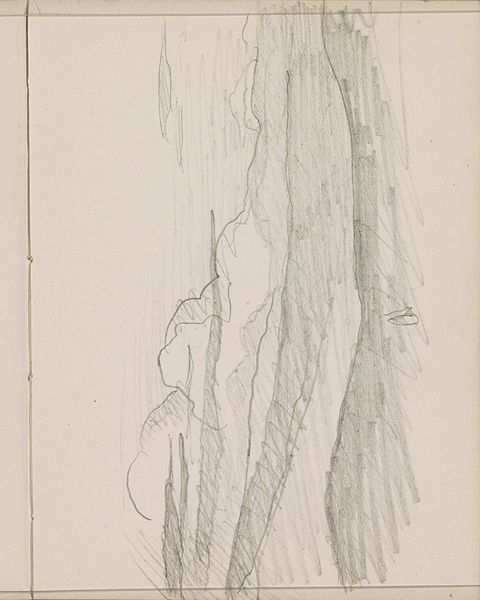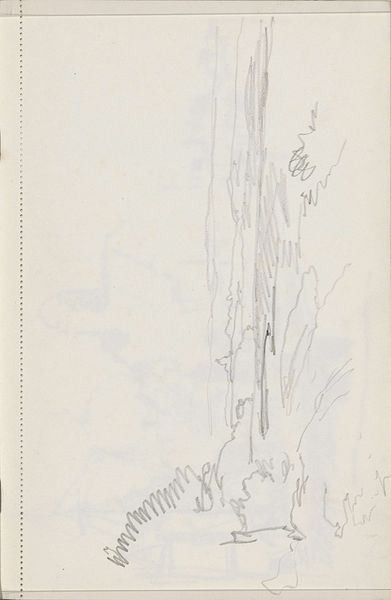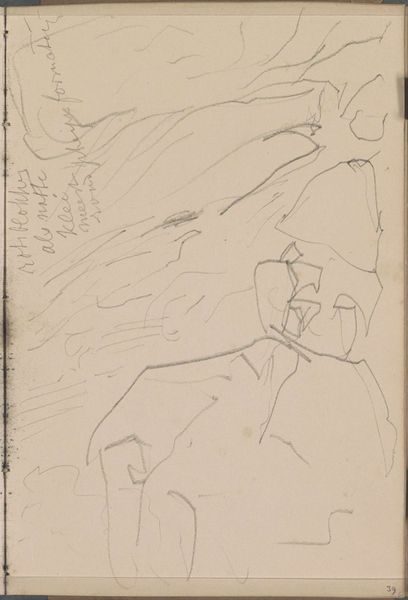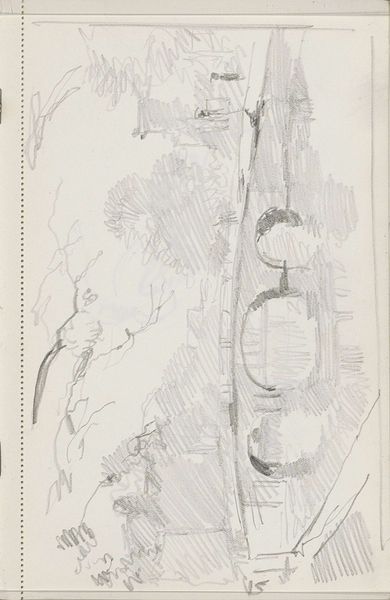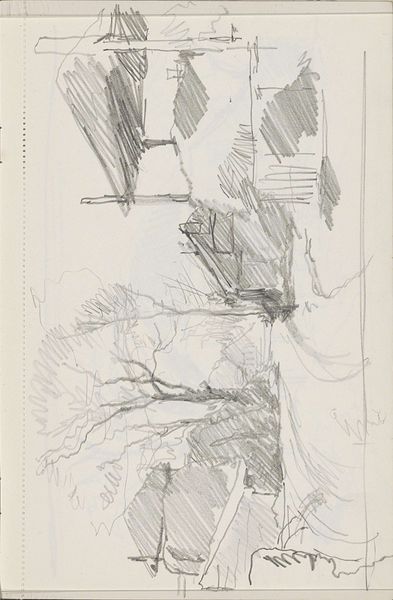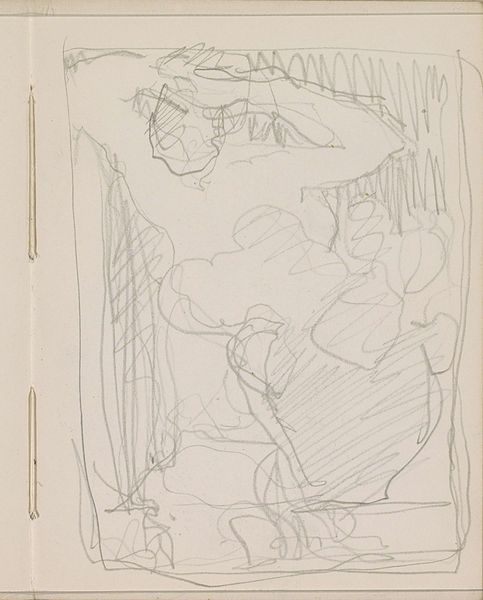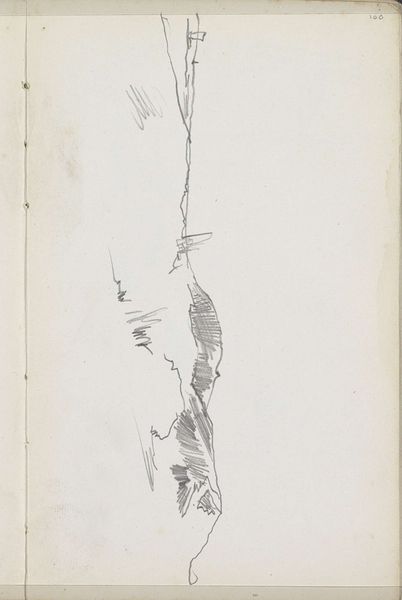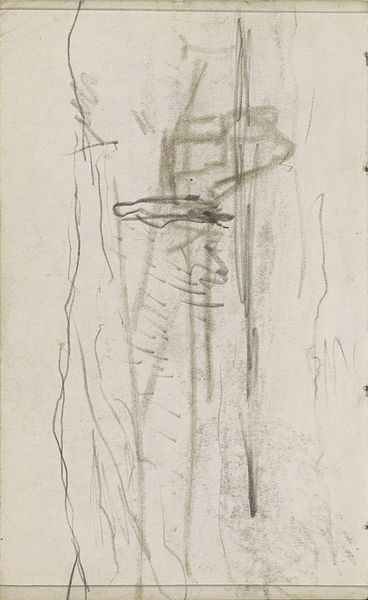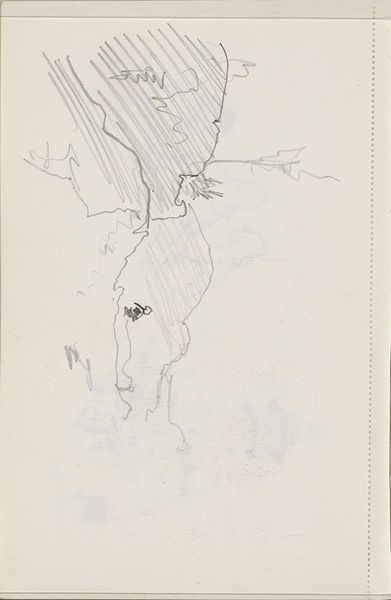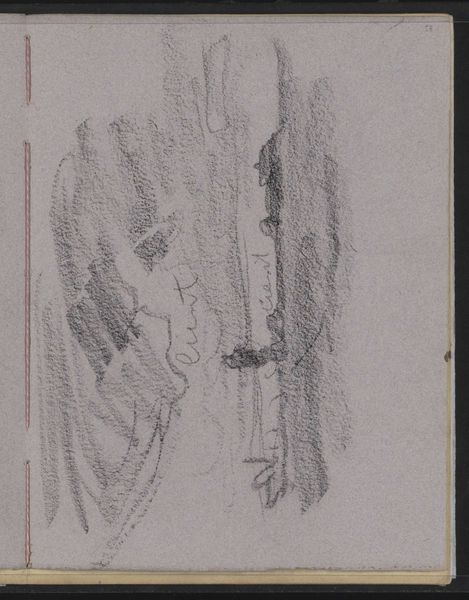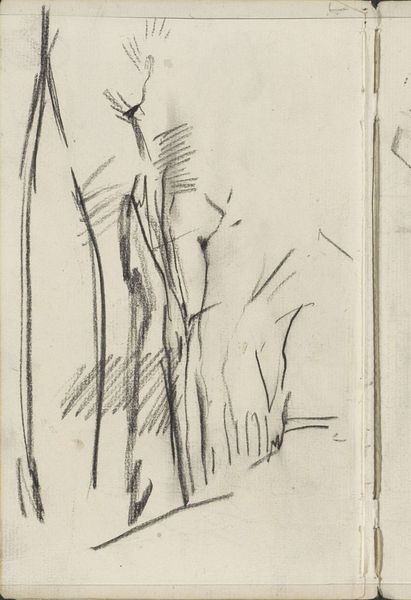
Copyright: Rijks Museum: Open Domain
Editor: This drawing, "Stadsgezicht, mogelijk Amsterdam," or "Cityscape, possibly Amsterdam," created with pencil on paper by George Hendrik Breitner in 1917, has this ghostly, ephemeral quality, doesn't it? I’m struck by its incompleteness. How do you interpret this work, looking at it with your expertise? Curator: It’s less about incompleteness and more about presence – the symbol of the modern city caught in a transient medium. Pencil on paper itself embodies a kind of ephemerality, a fleeting impression captured. The very lightness of the sketch, those hesitant lines, are deeply symbolic. Think of Amsterdam's historical importance as a trade center – do those buildings along the street evoke something of the Dutch Golden Age, now faded? Editor: I hadn't thought of it that way – the lines feeling hesitant but maybe carrying so much historical weight, almost like a cultural memory. Curator: Exactly. Note the barest indication of human presence. Do those absences point to anything, perhaps? This city sketch serves as more than just a depiction of a physical space. Breitner subtly communicates an urban psyche – how might its past experiences manifest? Editor: So the impressionistic style amplifies that feeling, turning bricks and mortar into a feeling rather than just a place. I am looking again and see more of a deliberate decision to represent cultural memory in these simple pencil lines, like we are just catching a memory. Thank you. Curator: And the symbolic nature of the medium! An inexpensive method used to represent invaluable generational knowledge. Food for thought, certainly.
Comments
No comments
Be the first to comment and join the conversation on the ultimate creative platform.
